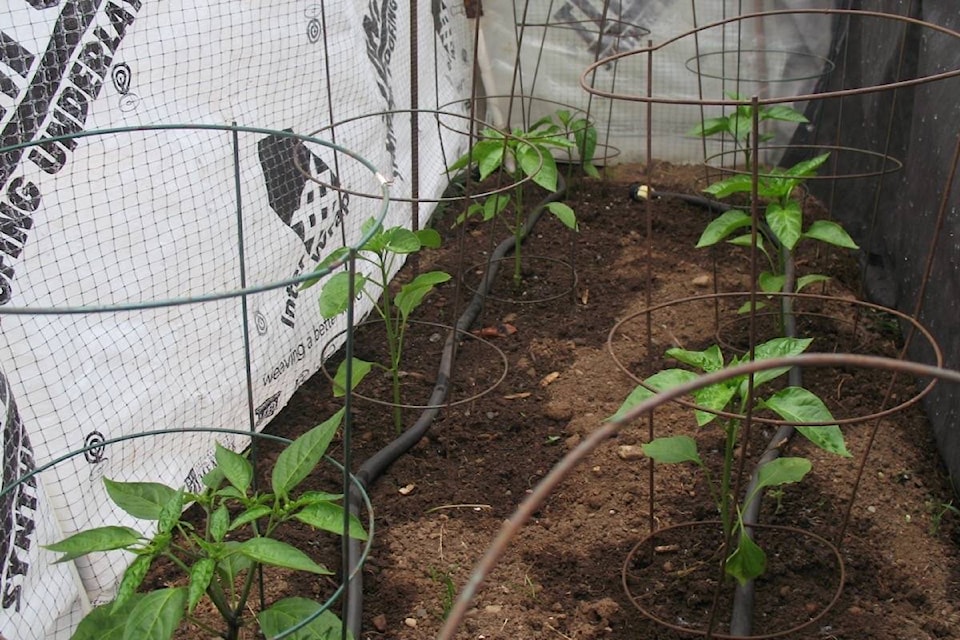When conquistadores invaded the New World, they discovered something far more valuable than gold: a unique cuisine, the result of generations of experimentation and adaptations to various soils, altitudes and climates. The native people had already developed many varieties of potatoes, corn, squash, beans, tomatoes, cocoa and peppers, to name just a few crops, but mere Spaniards couldn’t stop these inveterate farmers.
Today Chile’s seed exports rank fifth in the world and we are among their lucky beneficiaries. Peppers, for example, have been cultivated at least since 3300 BC in South America and many varieties have been developed that grow well in our short summers as long as conditions are kept warm enough for this heat-loving crop.
I started mine from seed in early March, bought a few seedlings from Country Grocer last month and planted them all into my garden a week ago. They sit about two feet apart inside a tunnel of plastic, sharing the space with a cucumber and melon because there was room in the bed and because, though melons have never performed well for me before, hope springs eternal in a gardener’s heart. A tomato cage placed over each pepper inside the tunnel prevents them from falling over when they’re ripe with fruit.
I’ve tried growing peppers without protection, with a three-foot-high plastic fence around the bed, or with black plastic covering the bed. What a waste of time all that was! My lovely greenhouse on the other hand, provided enough heat two years ago to allow for a bountiful crop and I’m hoping for similar success with the tunnel because this year I’m growing tomatoes in the greenhouse and there’s no room for peppers. It’s true what they say about greenhouses: “No matter how big you build it, you’ll run out of space.”
The tunnel consists of a frame of PVC pipe with a sheet of plastic covering the frame. I hammered short lengths of quarter inch rebar on both sides of the bed where I wanted the 8-foot PVC pipes to span, then slipped the ends of each length over the rebar to create hoops along the bed and covered it all with sheets of plastic. The pieces of plastic sheet on the ends and top are permanently attached with large stationery clips and removable long side pieces wrap around, enclosing the bottom half. When it gets hot I’ll check the peppers for heatstroke and remove the bottom strip, but I suspect that they prefer a lot of heat.
Peppers cross-pollinate so they should all be the same variety in the tunnel, unless you want to risk your sweet peppers tasting like jalapeños. In the unheated greenhouse I was harvesting peppers from late August right through to mid-December, so I think the important time for heat is during the earlier months.
